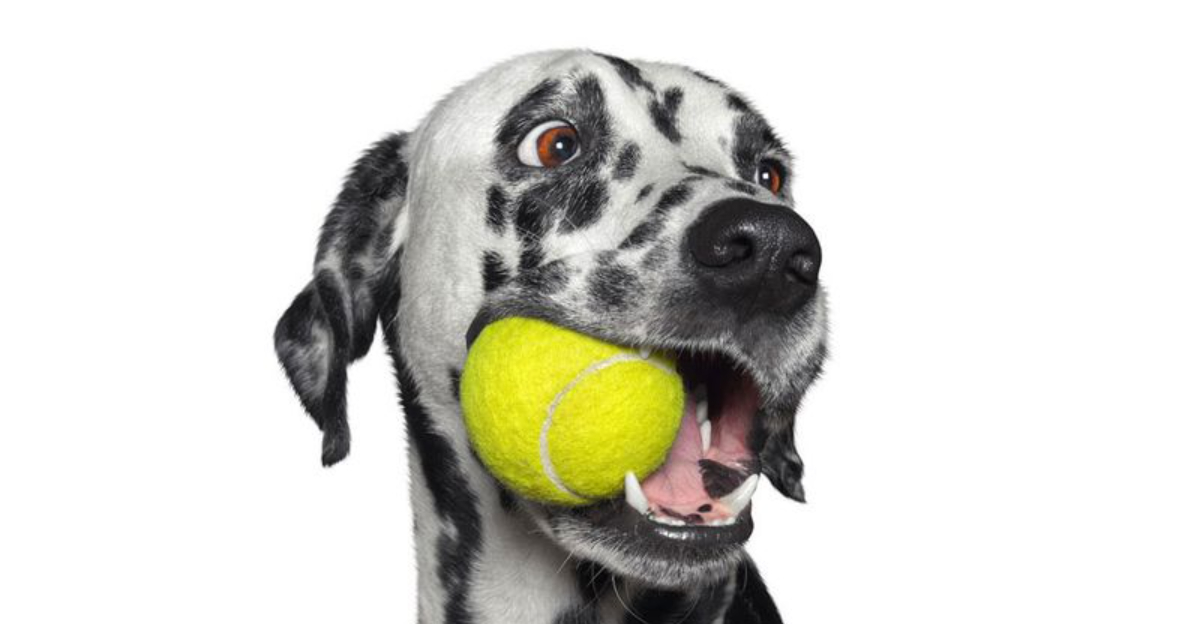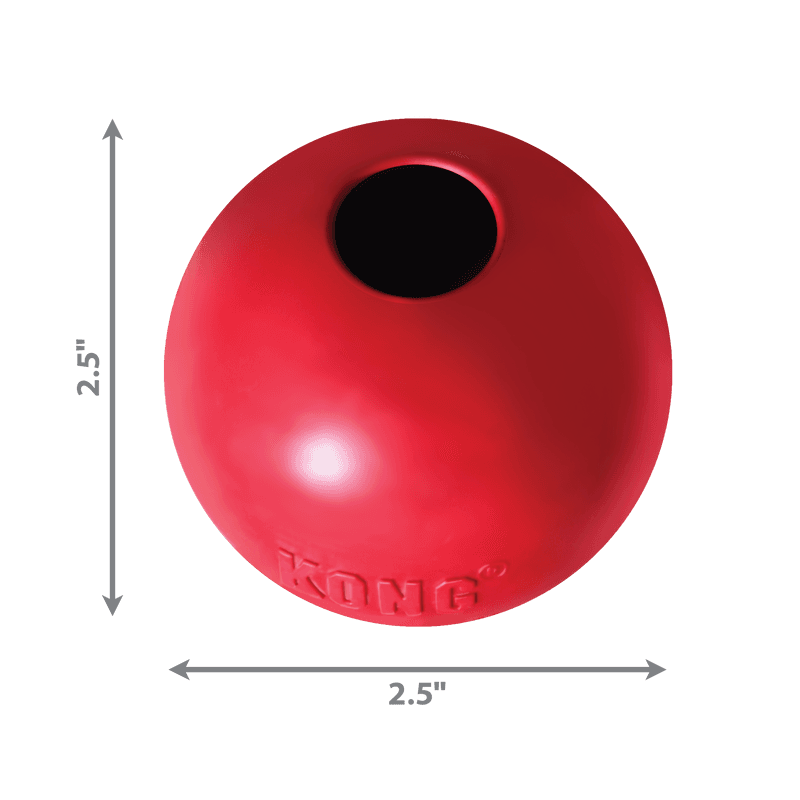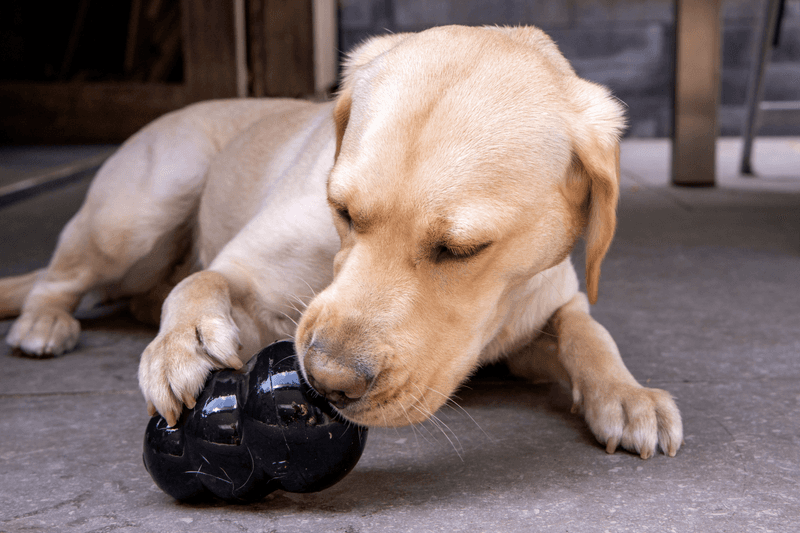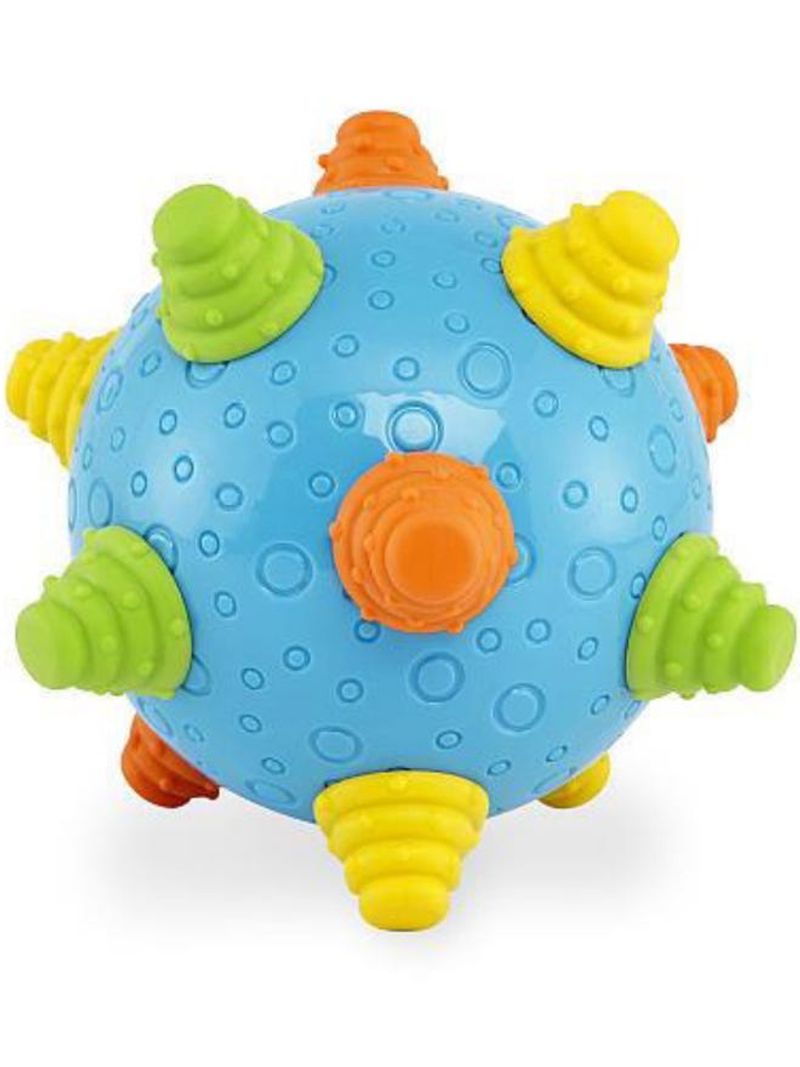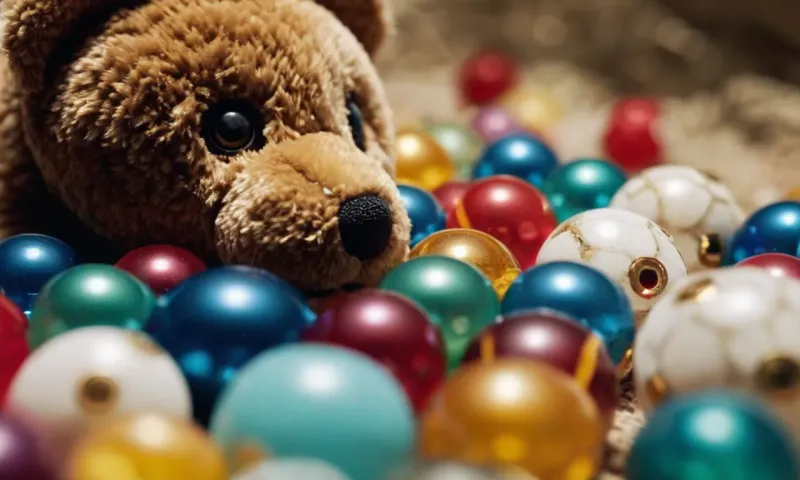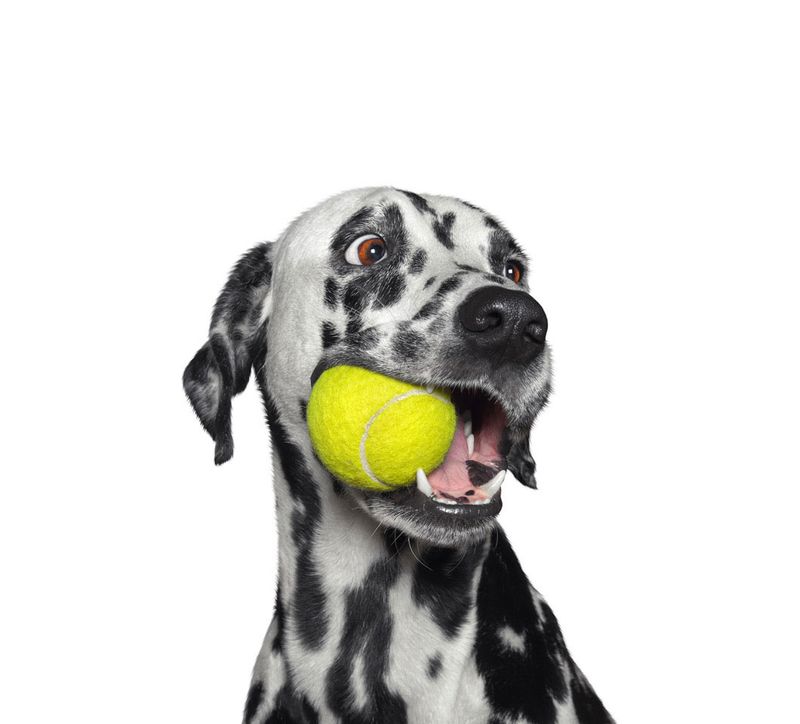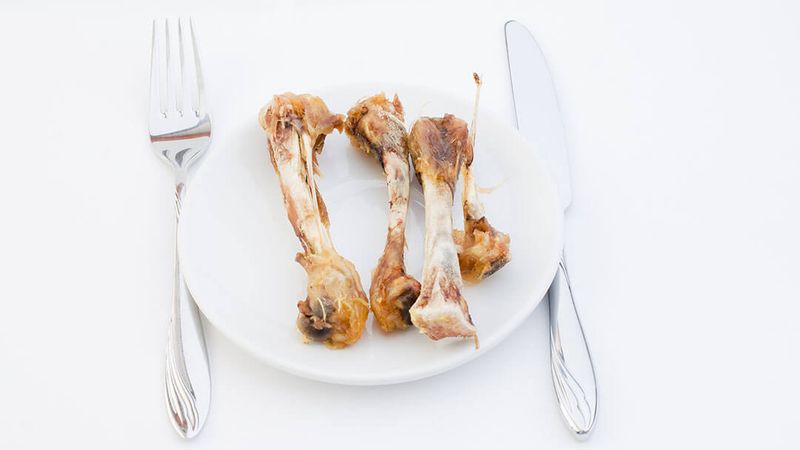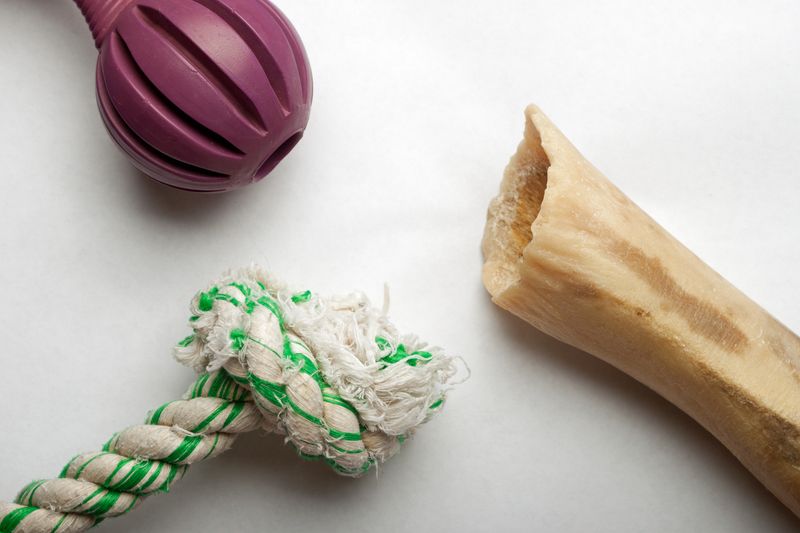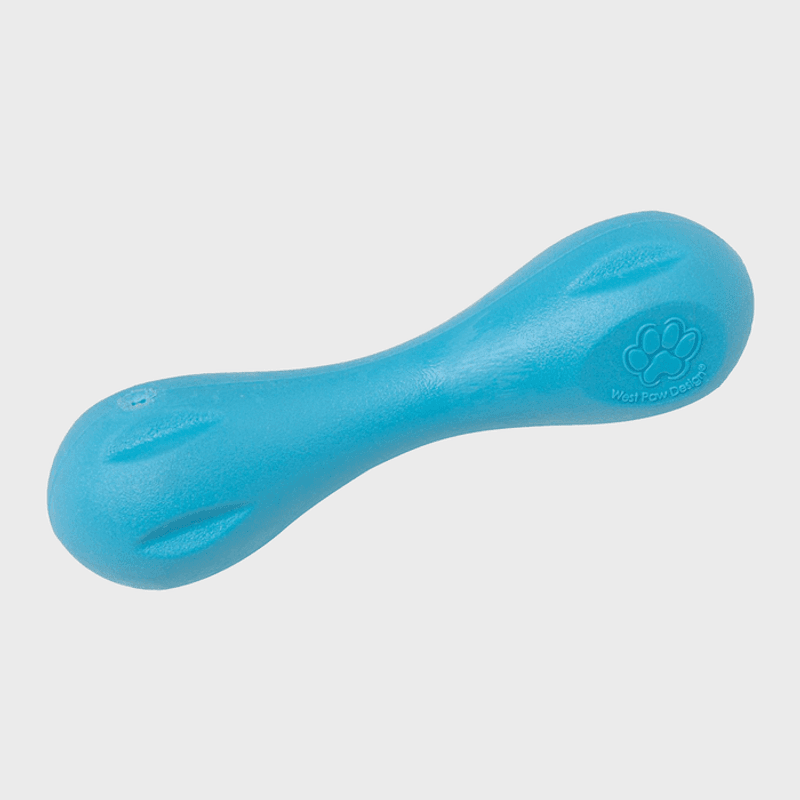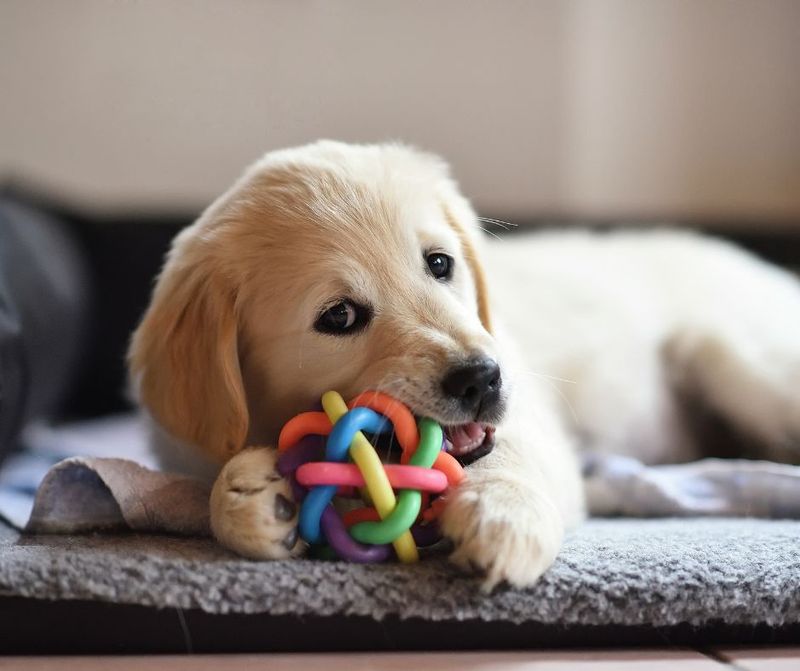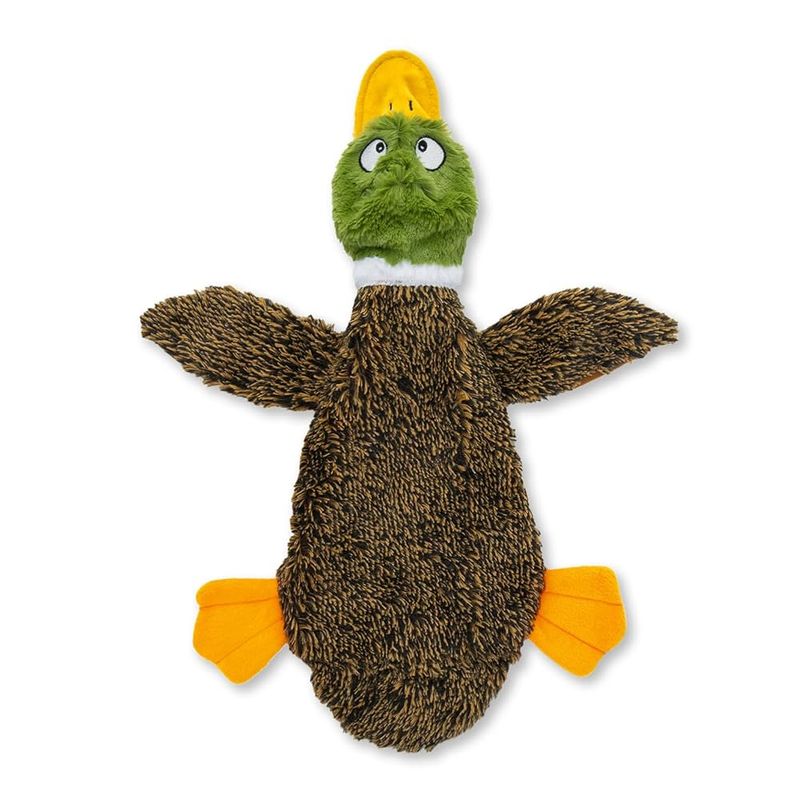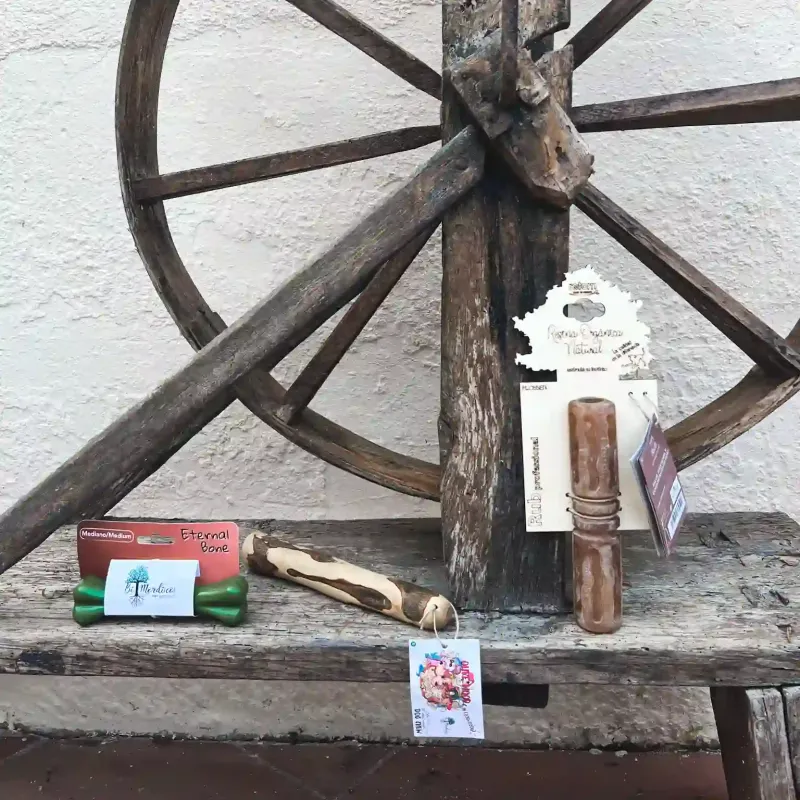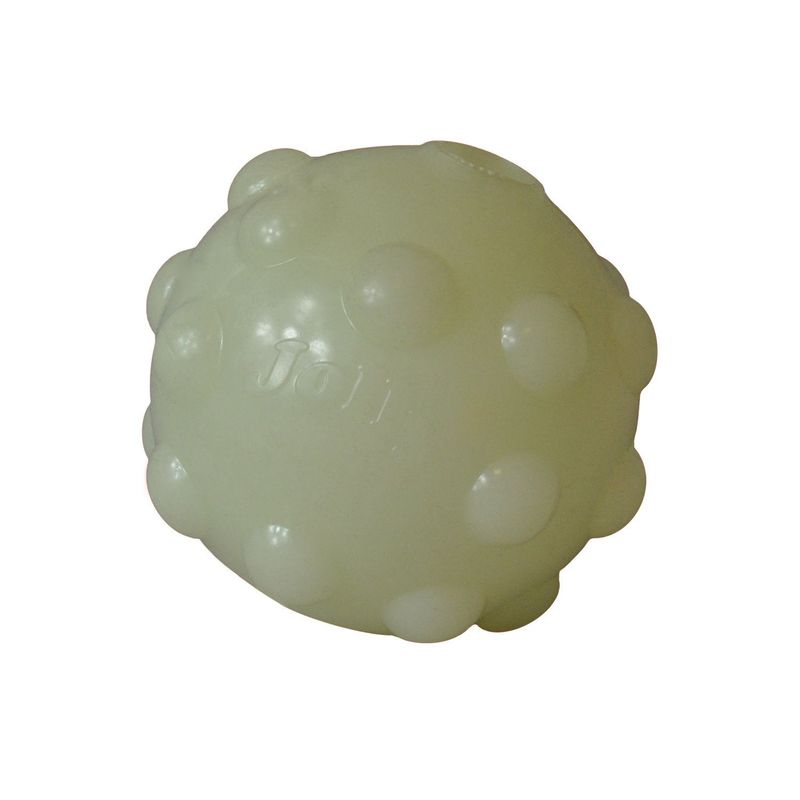Dog toys are meant to bring joy and stimulation to our furry friends. However, certain toys that seem harmless can pose serious risks. Veterinarians are raising alarms about popular dog toys that could actually endanger your pet’s life. This article highlights 13 such toys, urging pet owners to exercise caution.
Rubber Ball with One Hole
At first glance, this rubber ball might seem like any other plaything. However, the single hole design can create a vacuum effect. Dogs can get their tongues trapped inside, leading to serious injury.
Some owners have reported horrifying incidents where immediate medical attention was needed. The material and design make it especially risky for aggressive chewers. It’s vital to inspect toys for potential hazards before playtime.
Veterinarians recommend opting for balls with multiple holes to prevent suction-related injuries. Always supervise your pet during play to ensure their safety.
Rawhide Chews
While rawhide chews are popular for soothing teething puppies, they can be dangerous. Large pieces can break off, causing choking or internal blockages.
Some rawhides are treated with chemicals that might cause allergic reactions. The risk of bacteria such as Salmonella adds another layer of concern.
Pet owners should monitor their dogs while chewing rawhide. Consider alternatives like dental chews designed for safety. Consulting with a vet on safe chewing options can be invaluable.
Squeaky Toys with Small Parts
Squeaky toys delight many dogs, yet they can hide dangers. If a dog chews through the toy, small parts like squeakers can pose choking hazards.
The excitement of the squeak, combined with aggressive play, can lead to accidental ingestion. Owners should choose toys made with reinforced seams to prevent damage.
Regularly check toys for wear and tear, and supervise playtime. Discard any damaged toys immediately to prevent potential harm.
Stuffed Toys with Beads
Stuffed toys are another common choice but pose risks if not carefully chosen. Those filled with beads or small pellets can be hazardous.
When torn open, curious dogs might ingest these beads, leading to digestive issues. Some beads may even be toxic if swallowed.
Selecting toys made without beads and opting for ones with durable stitching can mitigate risks. Keep an eye on the condition of stuffed toys, and discard them if damaged.
Tennis Balls
Tennis balls are a classic dog toy, yet they can pose significant risks. The felt material on the ball can wear down dogs’ teeth over time. Additionally, aggressive chewers might break the ball into small pieces, posing a choking hazard.
The abrasive nature of the tennis ball’s exterior makes it unsuitable for long-term play. Dogs chewing through can ingest parts, leading to digestive blockages.
To ensure safety, regularly inspect the condition of the ball, and replace it when worn. Opt for dog-specific balls designed with safety in mind.
Bones from the Kitchen
Feeding bones to dogs might seem natural, but kitchen bones can be perilous. Cooked bones, in particular, can splinter easily, creating sharp fragments.
These splinters can cause mouth injuries, choking, or even pierce internal organs if swallowed. Raw bones carry a risk of bacterial contamination.
Veterinarians suggest avoiding kitchen bones entirely. Instead, choose specially designed bone substitutes made for safe chewing.
Frayed or Worn Rope Toys
Rope toys are a tug-of-war favorite but can become dangerous when frayed. Dogs might swallow loose strands, leading to gastrointestinal blockages.
As the toy wears, the risk of entanglement increases, posing a threat during play. Regularly inspect rope toys for wear and replace them when necessary.
Choosing high-quality, durable ropes designed for dogs can minimize risks. Always supervise your pet during play to prevent accidents.
Hard Plastic Toys
Hard plastic toys might seem indestructible, yet they can break into sharp pieces. These sharp fragments can injure dogs’ mouths or digestive tracts.
Plastic toys can also wear down teeth over time, especially for strong chewers. Checking the toy’s condition regularly helps prevent accidents.
Opt for toys made from safer, more flexible materials like rubber. Ensuring toys are replaced if damaged maintains a safe play environment.
Toys with Bells Inside
Toys containing bells intrigue many dogs but can conceal hazards. If a dog chews through the toy, the bell can become a choking or ingestion risk.
The sound of the bell can encourage aggressive play, increasing the chance of the toy breaking. Choosing toys with secure enclosures for bells can prevent risks.
Regular checks for wear and immediate disposal of damaged toys are essential. Consider safer alternatives without small internal parts.
Cheap Plush Toys
Inexpensive plush toys may be tempting but often lack durability. Dogs can easily rip them apart, exposing stuffing and small parts.
Ingesting stuffing can lead to intestinal blockages, requiring medical attention. The weak stitching also means these toys don’t hold up against strong chewers.
Investing in higher-quality toys designed to withstand vigorous play is advisable. Always supervise play and remove damaged toys promptly.
Edible Toys or Treats with Additives
Edible toys promise entertainment and nutrition, yet some contain harmful additives. These additives can trigger allergies or digestive issues.
Large chunks broken off can pose choking hazards. It’s crucial to read ingredient labels and choose products free from harmful chemicals.
Consulting with a veterinarian about safe treat options ensures your pet’s well-being. Safe, natural alternatives without additives are preferable.
Old Toys with Rusty Parts
Toys with metal components can rust over time, posing a risk of injury. Rusty parts can cause cuts, leading to infections or tetanus.
Regularly inspecting toys for signs of rust and damage is crucial. Replacing old toys with new, rust-free options ensures safety.
Opting for toys made entirely of rust-resistant materials can prevent such hazards. Always coordinate with your vet for toy recommendations.
Glow-in-the-Dark Toys
Glow-in-the-dark toys appeal to dogs and owners alike due to their novelty. However, the materials used to create the glow can be toxic if ingested.
Chewing through the toy can release harmful substances, making these toys hazardous. Ensuring toys are from reputable brands with safety certifications can help.
Opt for toys made without glow-in-the-dark materials, and always observe pets during play. Safety should always come first, even with novel toys.
